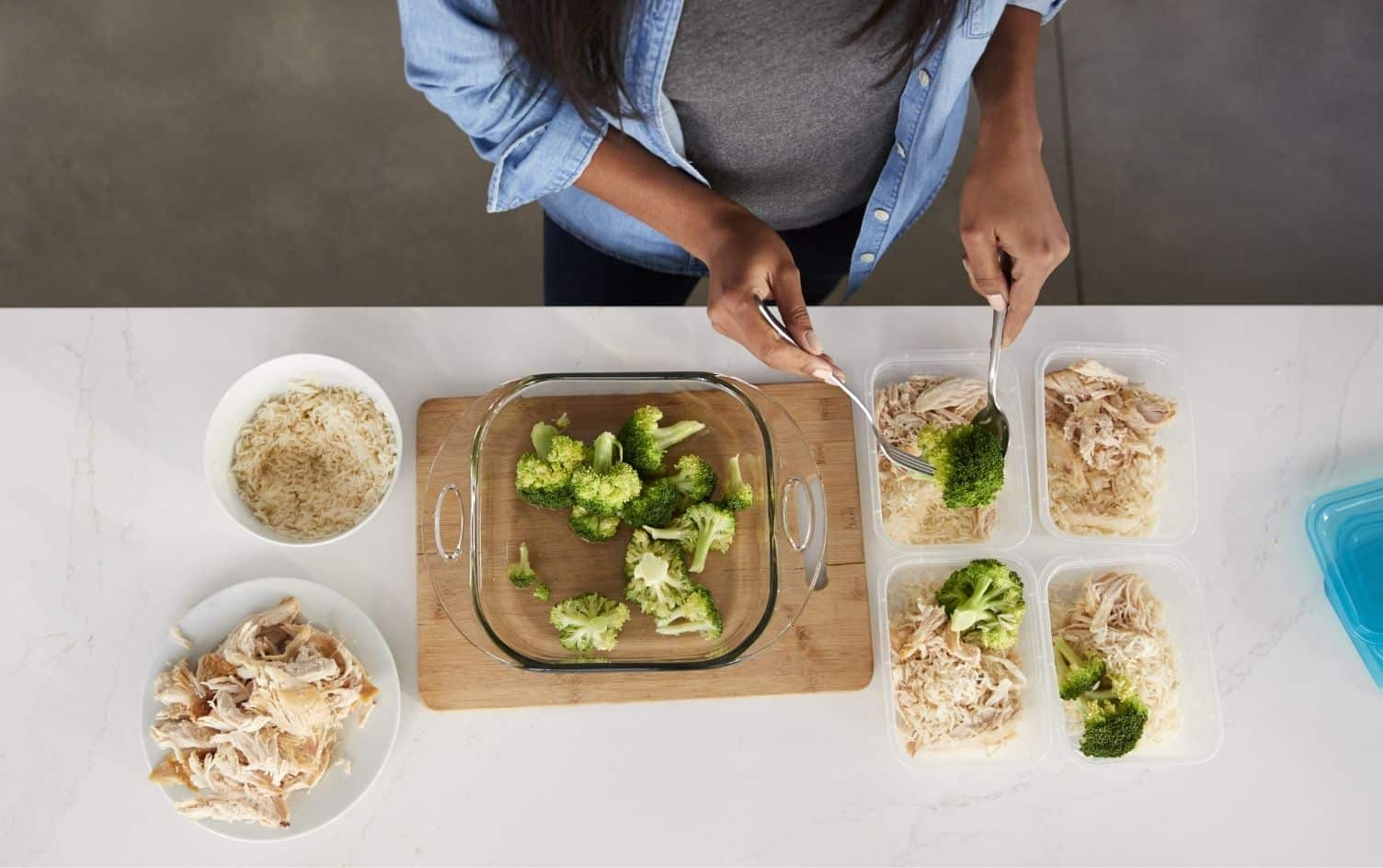By Liz Sanders, MPH, RDN
Did you know that food waste is a global problem? Here in the U.S., we toss 35 million tons of food each year. That’s the equivalent of about 7 million African bush elephants or (if you can’t visualize elephants) 18 million midsize SUV’s.
Any way you envision it, it’s safe to say that we have a big food waste problem on our hands. But why should we care? Because cutting food waste is good for…
Your environment. Less food wasted means less environmental impact that goes along with processing and shipping unused food. It also reduces your carbon footprint by cutting methane emissions (think: global warming) that go hand in hand with decomposing food.
Your wallet. Who could forget the bottom line? Reducing food waste could save us a lot of money. Every month, Americans throw away an average 20 pounds of food per person. That’s the equivalent of more than a full reusable grocery bag full of food!
So, how do we tackle a mountain of wasted food? One small step at a time. Here are some smart strategies to help you reduce the amount of food you and your family toss out:
- Plan your meals. A little meal prep can go a long way! Plan out your weekly meals and snacks, and have your needs in mind (or, better yet, on a list) before hitting the store. This will not only ensure you have all the items you need, it will also prevent you from buying extra food that you’ll likely throw away.
- Buy a mix of fresh, frozen and canned foods. While fresh fruits and vegetables are a great option, frozen or canned items have a longer shelf life. Purchasing a mix of fresh, frozen and canned produce allows you to cut back on food waste and have more options for meal prep.
- Know your portion sizes. Finishing all the food on your plate may seem like the right thing to do to prevent food waste, but it’s still wasteful if you’re eating extra calories. Get a handle on proper portion sizes and calorie needs for your meals. Preparing the right-size portion can cut down on unfinished food and help you achieve your weight-loss goals. Also, don’t feel pressured to finish all your food when dining out. Be prepared to take home your leftovers.
- Respect your leftovers. Look for creative ways to give your leftovers a new twist. The classic post-Thanksgiving turkey sandwich is a great example. Also, certain items can be kept in the fridge safely longer than others. Keep a cold storage chart on your refrigerator, and write dates on your leftovers. This will help you plan meals with your leftovers in mind. After all: If you don’t use ‘em, you lose ‘em.
- Get to know your “date.” (No romantic dinner required.) Understanding the differences between “sell by,” “use by” and “best by” dates can help you be more deliberate when you buy food and when you clean out your fridge. Need to quickly determine what to throw out? Focus on “use by” dates.
- Use by: The date, determined by food product manufacturers, by which the food should be consumed. Products should be discarded after the “use by” date.
- Sell by: The date, determined by food manufacturers, by which the food should be sold at retail. It is still safe to consume foods after this date has passed.
- Best by: Date by which the product should be consumed for ideal quality. It is still safe to consume foods after this date has passed.
- Compost if possible. We know that not everyone is equipped to do this. If you are, composting is a great way to reduce your food waste even more. According to the U.N. Food and Agriculture Organization, composting could help divert up to 330 pounds of food waste per household per year from landfills. This could help to cut down on methane emissions, since the food waste is recycled instead of being buried in a landfill.
- Donate surplus food. Overstocked your kitchen with nonperishables? Donate your extras to food banks, pantries and rescue programs.
- Don’t reject “ugly” food. Reducing food waste is as much about what we choose to eat as it is about what we throw away. Indulge your inner foodie by trying new-to-you cuts of meat that are traditionally discarded — or even offal. Also, give imperfect produce a chance. A small bump or bruise on fruits and vegetables may not be pretty, but it’s no reason to throw them out.
DID YOU KNOW? Depending on where you live, there are programs that can get imperfect produce to your door at a discounted price.
A “sustainable diet” is defined as economical, environmentally friendly, socially responsible and balanced. Taking steps to reduce food waste can help your diet achieve all these characteristics. We can pitch a lot less food if we each pitch in a little to prevent food waste.
Source for Food Waste Statistics: Environmental Protection Agency, 2016




